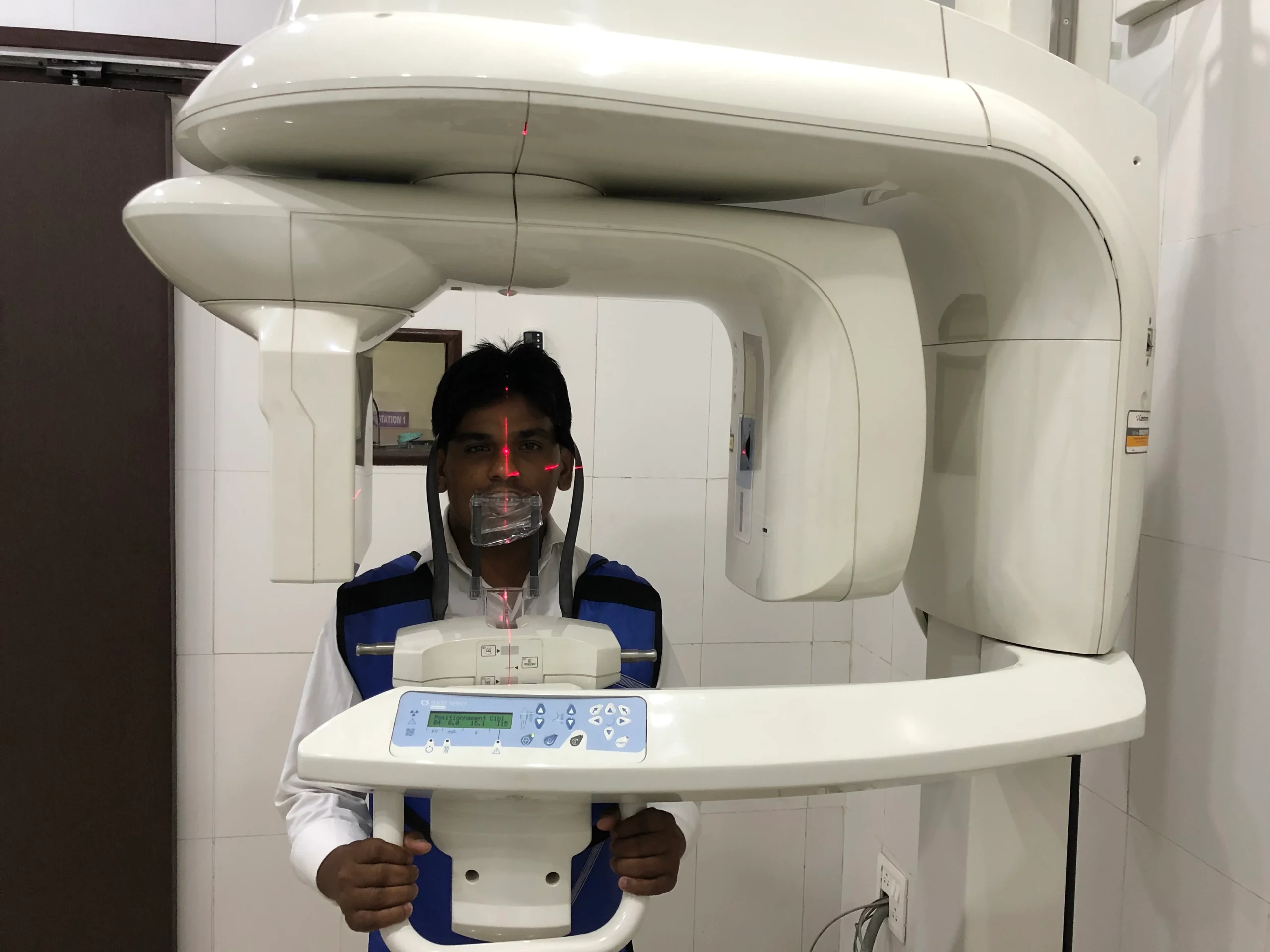What is Dental Tomography and How Does It Work?
Dental tomography, often referred to as dental CT (computed tomography), is an advanced imaging technique that uses X-rays to capture detailed cross-sectional and 3D images of the teeth, jawbone, and surrounding structures. Unlike conventional dental X-rays, which only provide a two-dimensional view, dental tomography offers a comprehensive, volumetric visualization, enabling precise diagnosis and treatment planning. By providing detailed images of the length, width, and depth of the teeth, jawbone, and airways, dental tomography plays an essential role in various dental procedures and assessments, such as implant planning, root canal treatment, and jawbone evaluation.
How Does Dental Tomography Work?
Dental tomography uses low-dose X-rays that rotate around the patient’s head, capturing multiple images from different angles. These images are processed by a computer to create a detailed 3D model of the patient’s oral structures, including teeth, bones, and soft tissues. This 3D view allows dentists to visualize the patient’s mouth from various angles, providing more accurate information for diagnosing and planning treatment.
Who Should Get Dental Tomography?
Dental tomography is recommended for a range of dental and maxillofacial conditions, including:
•Jaw Pain, Lesions, Trauma, or Fractures: Tomography is ideal for assessing jaw injuries or identifying lesions that may not be visible with traditional X-rays.
•Root Canal Treatment or Bone Grafts: It provides critical information about the root canal system and bone quality, helping guide complex procedures like root canal treatments and bone grafts.
•Dental Implant Planning: Tomography helps dentists accurately assess the jawbone’s shape and size, ensuring the precise placement of implants.
•Evaluation of Impacted Teeth: It is particularly useful for assessing impacted teeth that may require surgery.
•Cleft Palate Assessments: Dental CT can provide valuable insights into cleft palate conditions, aiding in the planning of corrective surgeries.
•Surgical Guidance: Tomography assists in guiding dental surgeries, ensuring accurate results.
Does Dental Tomography Involve Radiation?
Yes, dental CT does involve low-dose radiation, but it is generally considered safe for most patients. After the scan is completed, no radiation remains in the body. The radiation exposure during dental tomography is minimal, and the benefits of obtaining detailed diagnostic information outweigh the risks.
Why is Dental Tomography Important?
Dental tomography is an essential tool for accurate diagnosis and treatment planning in various dental and maxillofacial procedures. Some of the primary benefits include:
•Accurate Implant Placement: The detailed images show the exact shape, size, and density of the jawbone, ensuring precise placement of dental implants.
•Infection Localization: Dentists can pinpoint the exact location of any infections, making treatment more effective.
•Detailed Diagnostics: Dental tomography helps identify cracked teeth or other conditions that may not be visible in traditional X-rays, facilitating quicker and more effective treatment.
•Lesion Identification: It can detect abnormal lesions, such as bone cancers, tumors, and cysts, enabling early intervention.
Advantages of Dental Tomography:
•Enhanced Imaging: It offers three-dimensional views with higher quality and accuracy than traditional X-rays.
•Comprehensive Views: Provides detailed images of both bone and soft tissues, giving a complete picture of the oral structures.
•Precise Treatment Plans: The ability to view structures from multiple angles allows for more accurate treatment planning.
•Comprehensive Examination: Dental tomography offers a thorough view of the patient’s mouth and teeth, aiding in a complete diagnosis.
•Non-Invasive and Painless: The procedure is painless and non-invasive, making it suitable for a wide range of patients.
How Long Does Dental Tomography Take?
The procedure is quick and painless, typically taking no more than 40 seconds for a full-mouth scan. The comprehensive nature of the imaging ensures that multiple images are captured in one session, allowing for detailed examination and reducing the need for repeat visits.
Starting treatment with dental tomography not only shortens the time required for overall treatment but also helps dentists create a precise treatment plan from the outset. Compared to traditional X-ray procedures, dental CT scans offer the advantage of obtaining clearer, higher-quality images in a shorter time, leading to faster diagnoses and more efficient treatment interventions.
Conclusion:
Dental tomography is an indispensable tool in modern dentistry, providing the detailed 3D imaging necessary for diagnosing and planning complex dental treatments. Whether it’s implant planning, root canal therapy, or assessing trauma, dental CT scans offer superior imaging quality, ensuring precise, effective treatment with minimal radiation exposure. If you’re undergoing complex dental treatments, consulting with your dentist about dental tomography can help ensure the best outcomes for your oral health.

